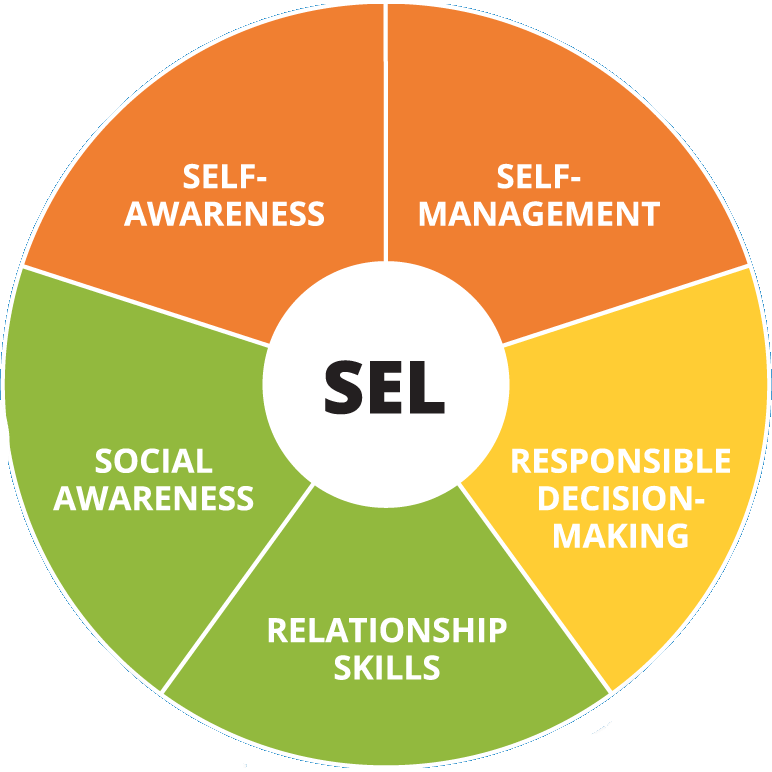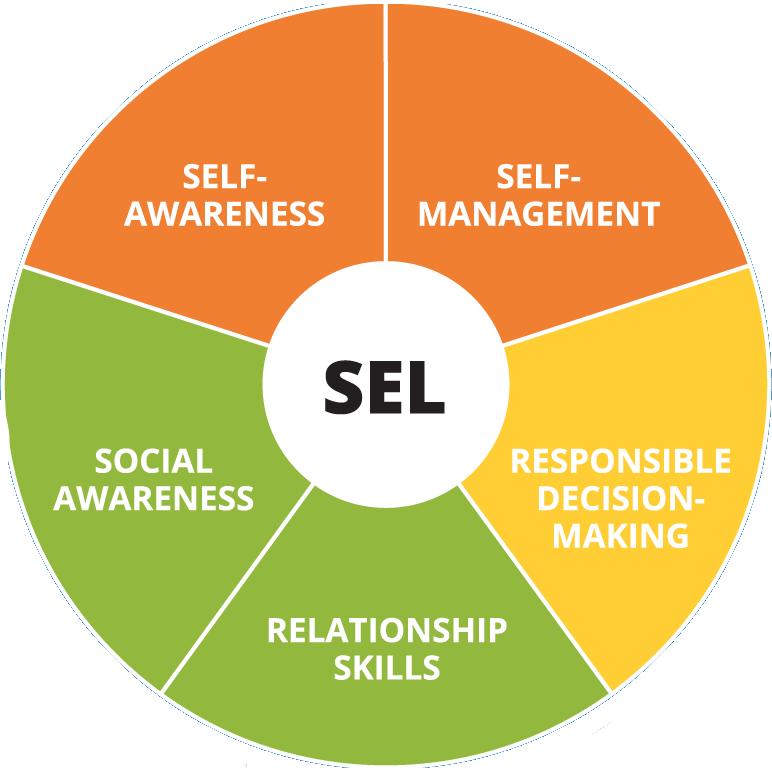K2 Indicators
ALL
E |
|---|
S |
|---|
SEL-K2.RDM
| |
SEL-K2.RDM.1ip
K2.RDMResponsible Decision-Making Indicator
IP Identifying Problems
SEL-K2.RDM.1ip Define a problem.Student Learning Targets:Knowledge Targets
Reasoning Targets
Skills (Performance) Targets
Product Targets
Proficiency ScaleThe Student is able to...(1) Beginning
(2) Developing
(3) Proficient
(4) Advanced
| |
SEL-K2.RDM.2as
K2.RDM Responsible Decision-Making Indicator
AS Analyzing Situations
SEL-K2.RDM.2as Analyze potential consequences of choices.Student Learning Targets:Knowledge Targets
Reasoning Targets
Skills (Performance) Targets
Product Targets
Proficiency ScaleThe Student is able to...(1) Beginning
(2) Developing
(3) Proficient
(4) Advanced
| |
SEL-K2.RDM.3sp
K2.RDM Responsible Decision-Making Indicator
SP Solving Problems
SEL-K2.RDM.3sp Explain a problem solving process.Student Learning Targets:Knowledge Targets
Reasoning Targets
Skills (Performance) Targets
Product Targets
Proficiency ScaleThe Student is able to...(1) Beginning
(2) Developing
(3) Proficient
(4) Advanced
| |
SEL-K2.RDM.4e&r
K2.RDM Responsible Decision-Making Indicator
E&R Evaluating & Reflecting
SEL-K2.RDM.4e&r Explain the differences between safe and risky behaviors.Student Learning Targets:Knowledge Targets
Reasoning Targets
Skills (Performance) Targets
Product Targets
Proficiency ScaleThe Student is able to...(1) Beginning
(2) Developing
(3) Proficient
(4) Advanced
| |
SEL-K2.RDM.5er
K2.RDM Responsible Decision-Making Indicator
ER Ethical Responsibility
SEL-K2.RDM.5er List age appropriate responsibilities at home and school.Student Learning Targets:Knowledge Targets
Reasoning Targets
Skills (Performance) Targets
Product Targets
Proficiency ScaleThe Student is able to...(1) Beginning
(2) Developing
(3) Proficient
(4) Advanced
| |
SEL-K2.ReS
| |
SEL-K2.RS.1c
K2.RS Relationship Skills Indicator
C Communication
SEL-K2.RS.1c Demonstrate verbal etiquette to foster better communication.(e.g. please, thank you, excuse me, etc.) Student Learning Targets:Knowledge Targets
Reasoning Targets
Skills (Performance) Targets
Product Targets
Proficiency ScaleThe Student is able to...(1) Beginning
(2) Developing
(3) Proficient
(4) Advanced
| |
SEL-K2.RS.2se
K2.RS Relationship Skills Indicator
SE Social Engagement
SEL-K2.RS.2se Identify opportunities for social participation at home, school and in the community.(e.g. family meal time, free play, extracurricular activities, diverse peer groups, etc.) Student Learning Targets:Knowledge Targets
Reasoning Targets
Skills (Performance) Targets
Product Targets
Proficiency ScaleThe Student is able to...(1) Beginning
(2) Developing
(3) Proficient
(4) Advanced
| |


 What are the SEL Competencies?
What are the SEL Competencies?



